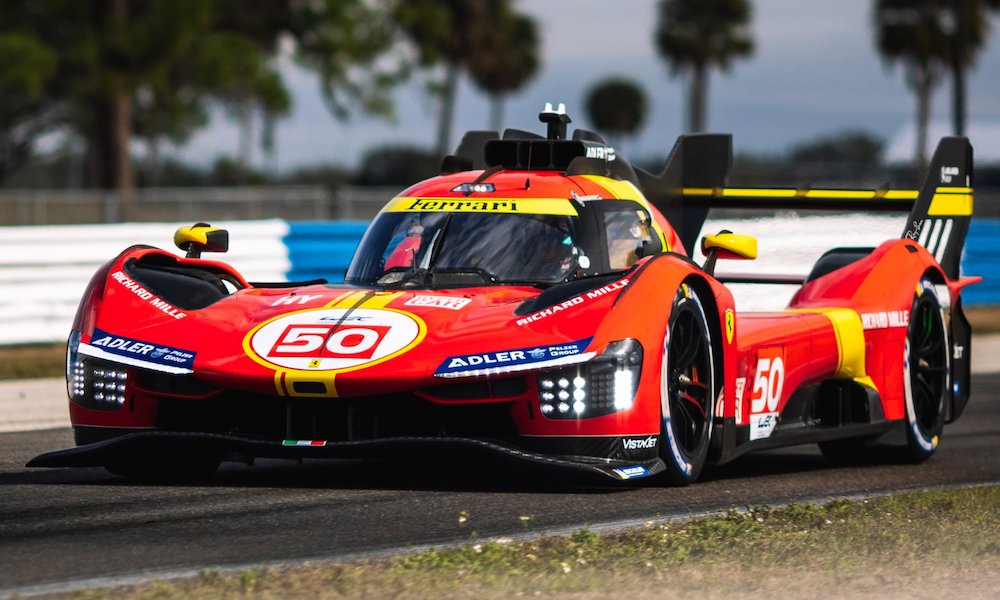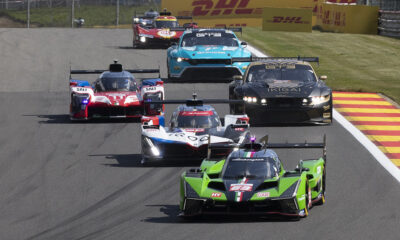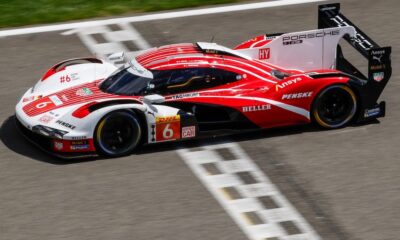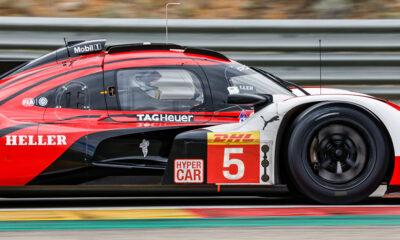
Photo: Ferrari
Ferrari Hypercar driver James Calado believes his wealth of experience racing in GTE-Pro could be beneficial as he gets up to speed competing for overall victories in the FIA World Endurance Championship.
Calado will share the No. 51 Ferrari 499P with longtime co-driver Alessandro Pier Guidi as well as ex-Formula 1 racer Antonio Giovinazzi in the globe-trotting series, which kicks off with the 1000 Miles of Sebring next month.
Calado and Pier Guidi, as well as teammates Antonio Fuoco and Miguel Molina who share the No. 51 car, directly transition from AF Corse’s factory GTE-Pro effort to the Hypercar class.
Similarly, Porsche Penske Motorsport’s pair of Hypercar entries are staffed by several drivers who graduate from GT racing, including Calado’s longtime rivals Kevin Estre and Michael Christensen.
Calado became part of Ferrari’s GTE-Pro team straight out of single-seaters in 2014 and has spent the better part of a decade competing almost exclusively in GT machinery with the Prancing Horse.
Despite the significant shift from heavier GT cars to the lighter, more downforce-heavy LMH car, the Briton claimed that the transition has been relatively easy.
“I think in terms of driving the car, we’ve done a lot of laps,” Calado said.
“All of us have done a lot of laps in this car. We’ve almost done as much as you probably would in the whole season in race trim in the WEC. So in terms of driving the car, no problem at all with all of us.”
Calado did, however, point to one significant point of contention: traffic management.
With the move to Hypercar, the 33-year-old admits that his role in the multi-class competition that is key to WEC races fundamentally shifts.
“It’s rare that we’ve been on a track with GTs,” he noted. “We were always the ones in GTE complaining about the prototypes and now it’s completely changed into the opposite direction.
“That is something that will take some getting used to, but in terms of driving the car it comes natural and it feels good.”
In that light, he reckons that his experience in GTE competition and understanding of the slower classes’ behavior on track in relation to the faster prototypes could be a benefit in the races to come.
“Obviously, I’ve done a lot of WEC races,” he said. “So just in terms of experience they way they run and what happens.
“At the time it was LMP1 and now it’s LMH, but we know how they work with us so we will try and take that approach and try and do the same.
“Of course it’s not easy, the closing speeds are huge. That we know for sure but I don’t think it will take long.
“We’ll be cautious and we’ll try and learn as fast as we can, especially the first race at Sebring.”
Sebring Tests Went “As Hoped” With Focus on Reliability
Ferrari recently carried out two separate LMH tests at Sebring, one at the end of January and a more recent outing earlier this month.
During the second test, Calado took turns behind the wheel with Pier Guidi, Giovinazzi and Fuoco, with Nicklas Nielsen and Miguel Molina absent in the Asian Le Mans Series.
Calado explained that the goal of the test was to further boost the 499P’s reliability, with the 3.7-mile circuit notoriously rough on car components.
“The Sebring test was something where we could improve parts of the car to make them more reliable,” he said. “This was the priority. We know with these cars that they’re not the most reliable.
“All of us are saying the same thing, so this was the main focus and obviously just to get as many laps as possible to see where we are and where the car can go wrong or not.
“This was the main thing and obviously it was a chance for all of us drivers to get laps under our belt which will obviously help going into the first race.
“It was a good test. We found out a lot of things in terms of setup and all these little things. It was important and we got some good data now to study going forward.
“I think it’s not just Sebring in general, but every time you get laps in this car for the drivers but also for the team and the engineers, it’s vital.
“Every time we’re in [the car], we try to find something. We might find something wrong or something right so it’s important that we just do as many laps as we can.
“In terms of Sebring, the test was as we hoped. We went through a run program that was all designated by our engineers in terms of what we need to do, how to get the race ready and where we are on performance as well.”






















